Disclosure: Privacy Australia is community-supported. We may earn a commission when you buy a VPN through one of our links. Learn more.
How to Buy & Invest in Gold

Investors often think of gold as a volatile asset—one that’s best left out of long-term financial plans. Which can make gold seem more like a gamble than a solid opportunity.
However, investing in gold may not be so risky. There are plenty of ways that you can safely invest without exposing your entire portfolio to the precious yellow metal.
Today, I cover some of the basics of what you need to know about investing in gold, including how to buy physical bullion and why you would do so.
Table of Contents:
- 👑 How Can I Buy Gold in Australia
- 👑 Should I Buy Gold at its Price Now or Invest in Futures
- 👑 Gold Investment Mistakes
- 👑 Precious Metals in General
- 👑 FAQs
What is Gold (And Why is it Considered an Investment)? 🔱
At a glance:
- Gold as a commodity can be found all over the world. It’s a naturally occurring element that’s been used as currency for millennia and is still being used as a store of value today.
- 📈 Gold prices can go up or down based on current economic conditions and market sentiment. In recent years, gold has also been used as an investment.
- Investors buy gold for two main reasons: They want to earn interest on their money and/or store it for the long term for an increase in its value over time.
- 🌐 Gold has been used as money for so long that it has the highest level of unsecured trust in the world. This means that it’s pretty difficult to lose large amounts of money if you hold gold as an investment.
Gold as an investment goes back millenia
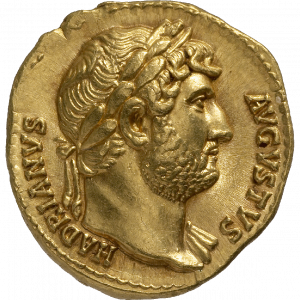
The earliest recorded use of gold as money goes back to around 700 BC, when the Chinese began using it as an exchange medium. In Western cultures, gold became a popular medium of exchange around the 11th century.
Gold coins were commonly used in Western Europe, China, and India during that time, but they were also used as jewellery and ornaments.
Gold as an investment is generally considered safe, but it’s not risk-free. Gold prices can fluctuate based on the economy and the financial markets. If you invest in gold, you should be prepared to weather price fluctuations and potentially lose money.
However, it has historically been a good long-term investment, so most people who buy gold do so knowing that they may lose some of their money in exchange for a chance to earn interest on their savings or watch the value of their investment grow over time.
Modern gold investment
The fall of the gold standard was a turning point in the history of gold, as it allowed governments to inflate their currencies at will. In the early 20th century, countries such as France and the United States began to create bills with lower and lower redemption values for gold. This caused the price of gold to rise dramatically, and it reached an all-time high in London in September 1931.
In 1970, President Richard Nixon announced that U.S. dollars would no longer be redeemable for gold, which made them completely fiat currency. The price of gold began to fall during this period due to increased supply from countries such as South Africa and Australia. However, its price has been steadily rising since 2001 due to increased demand from parts of Asia like India and China.
Today, there are many different ways for investors to buy physical gold bullion , including purchasing coins or bars from a dealer or buying them directly from a mining company that sells its output on the open market. Investors can also buy shares in a fund that invests primarily in precious metals or they can purchase futures contracts on various commodities exchanges around the world.
There are several reasons why investors choose to invest in physical gold bullion rather than other types of investments like stocks or bonds:
Gold is an extremely liquid investment – coins and bars can easily be sold back into the market at any time if you need cash quickly. Gold has historically been a reliable store of wealth and is not subject to the same market volatility that stocks and bonds are exposed to.
How Can I Buy Gold in Australia? (Futures vs. ETFs vs. Jewellers)
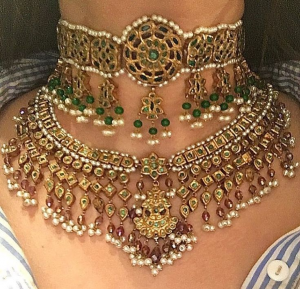
There are a number of ways to buy gold in Australia.
For example, you can purchase gold coins or bars from a dealer or jeweller. You can also buy gold bullion, which is usually sold in kilogram blocks or as coins called ‘tokens’.
Gold coins and bars are designed for collectors and investors, while gold bullion is designed for people who want to store their wealth in physical form and protect themselves against price fluctuations.
It’s important to know that there are a number of different types of gold bullion products available on the market that differ in price and size. Gold bullion products are usually sold by the ounce (oz) or kilogram (kg). The price per ounce will vary depending on the purity level of the product.
The purer the product is, the higher its price per ounce will be. Before you make your purchase, it’s important to do some research about your options so you can make an informed decision about how much you should pay per ounce for your product.
Once you know what product you want to buy, you can purchase it from a dealer or jeweller in one of three main ways – the first two examples are based on the spot price of gold:
- 👑 paying cash up-front
- 📊 using a gold bullion exchange-traded fund (ETF)
- 📈 investing in gold futures
Spot Prices vs. Futures
Gold prices, like other commodities, are quoted in two different ways: spot price and futures price.
Spot price is the current price at which you can buy or sell an asset. Futures prices are the prices of contracts for future delivery of an asset. They allow investors to buy or sell assets at specific prices at some point in the future. Futures contracts are standardised – they have standard sizes and durations, and they trade on organised exchanges, even Bitcoin futures exist.
Spot gold prices change throughout the day – this means that when you place an order for physical delivery of gold, you will be buying it at whatever the spot gold price was when your order was placed.
However, futures gold prices change only during specific times when trading occurs on organised exchanges – these changes are caused by investors buying and selling futures contracts with each other (i.e., speculators).
The spot gold market is extremely liquid – there is no need to wait until futures expiration dates to turn your physical bullion into cash, because most coins can be sold back into the market immediately.
Also, unlike stock markets, where there can be substantial differences between individual stocks’ price quotes due to differences in supply and demand for each one, commodity markets tend to have very similar pricing across different commodities because there is only one physical commodity being traded.
What is an ETF?
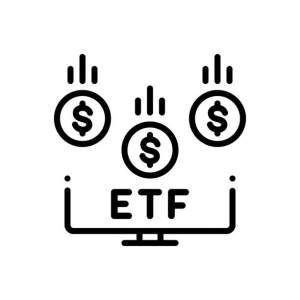
An exchange-traded fund is a type of investment that allows you to buy and sell units in the fund. ETFs are traded on stock exchanges just like shares. Each unit represents the value of a certain amount of gold that’s held in trust by the custodian bank.
When you invest in an ETF, you can choose how much gold you want to own – usually measured in ounces – and how much risk you want to take on. There are different types of ETFs available on the market that offer varying degrees of risk and return.
Once your investment is made, it’s important for investors to keep track of their investments so they can make sure they’re growing at an appropriate rate. You can do this by checking your portfolio online or by downloading regular reports from your custodian bank.
How does buying gold bullion work?
When buying gold bullion from a dealer or jeweller, it’s important for investors to make sure they know whether they’re buying trading gold or store gold. Trading gold refers to small bars and coins that are designed for investors who plan on selling their gold for profit.
Store gold refers to large bars or coins that are designed for investors who plan on keeping their gold investment for the long term. You can buy trading gold from most jewellers, while you need to go to a specialist dealer when buying store gold.
When you buy trading gold, it’s important to know what the current market price is so you know how much your investment is worth and whether it’s growing at an appropriate rate. You can get this information online or by calling your local dealer.
If you want to sell your trading gold, it’s important that you sell it back to the same dealer where you bought it from so they can verify its authenticity and weight.
Should I Buy Gold at its Price Now or Invest in Futures?

Futures markets are less liquid – while the amount of gold that is available for delivery in the futures market is very large, the amount of actual trading that occurs during a given trading session is quite small (usually less than 100 contracts per exchange).
This means that you will probably have to wait until your futures contract expires before you can sell it back into the market. As a result, when you buy gold futures, you are locking in your purchase price for gold, but you are also locking in your ability to sell it back into the market immediately.
However, the spot market has higher transaction costs – because most physical bullion coins can be sold back into the market immediately at whatever price they were trading at when your order was placed, there is no need to pay any fees for placing or removing orders.
However, on organised futures exchanges, all trades incur commissions (usually around $1 per contract). These commissions are not charged by the exchanges themselves; instead they are paid by investors to brokers who execute their trades.
The spot market has lower margins and minimums – margin requirements and minimum purchase sizes tend to be higher on organised futures exchanges due to their more speculative nature and smaller size relative to other commodities’ markets.
For example, on COMEX, margin requirements range from $2,000 per contract (for non-professional traders) up to $50 million per contract (for professional traders), while minimum purchase sizes range from 1 lot (100 ounces) up to 1,000 lots (100,000 ounces).
The most popular bullion coin exchanges (APMEX.com and ProvidentMetals.com) offer no minimums or margin requirements for their bullion coins.
The only people who should be using futures markets are professional traders who are buying or selling large amounts of metal on a daily basis for their business (such as a hedge fund). If you’re thinking about trading like this, you should probably talk with an experienced professional first; these markets are not for beginners!
Gold Investment Mistakes
Buying at the Peak
Many investors mistakenly believe that when the price of gold is at its highest, it’s a great time to buy. In reality, however, the height of a price trend isn’t necessarily a good time to invest in gold.
The price of gold is determined by supply and demand, along with interest rates and the state of the economy. When the price of gold rises, this usually signals that investors are nervous about the state of the economy, national security, and are looking for a safe place to put their money.
This means that there’s likely to be increased demand, which can push up the price of gold even higher. Investors should remember that a rise in the price of gold is not a guarantee of future returns.
Because the price of gold is determined by supply and demand, it’s possible that the price could decline in the future and reduce your overall return on your investment.
Selling When You’re Feeling Risky

Another mistake that many investors make is selling their gold when they’re feeling risky. Let’s say that you bought gold at $1,300 per ounce and it’s currently trading at $1,200.
You might be tempted to sell and limit your lossses. However, selling at this point would probably be a mistake. The price of gold fluctuates based on supply and demand, and it’s likely to rise again in the future. Therefore, it’s better to be able to hold on to your investment than to sell it at a loss.
Let the price of gold rise even higher and reinvest the proceeds when it’s time to make another investment. If you sell at the high point of the price trend, you’ll likely be taking a loss. Selling at the low point of the price trend, on the other hand, isn’t as good of an investment opportunity, as there’s less demand for gold.
How to Buy Gold Safely and Securely (and Store It)
You can buy gold coins, bullion, or gold bars to store your investment. Gold coins come in many different sizes, shapes, and metals, which can make them hard to distinguish from one another.
Gold bars, on the other hand, are usually rectangular and made from gold mined from the ground. You can also buy gold bullion, which is usually a combination of both coins and bars. The final way to buy gold is by buying a gold-backed investment like a gold-backed ETF or gold-backed exchange-traded fund (ETF).
Keeping your gold in a secure place is also essential to protecting your investment. Gold can be stolen or lost when it isn’t kept in a secure location, such as in a fireproof safe or a strong bank vault.
To protect your investment while it’s stored, you should make sure that you don’t lend your gold to anyone or allow anyone to store it in your home. Also, make sure that no one has a key to your storage location. You can use a combination of a combination lock, a locked box, and a security alarm to make sure no one has easy access to your gold storage.
Precious Metals in General
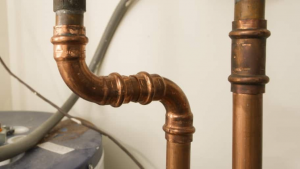
Copper
This has been dubbed the real most precious metal by many. Its value has been on the rise since the 16th century, when it was used to make coins. In addition to being used in coins, copper is also used for electrical wiring and plumbing pipes – making it one of the most practically valuable metals on Earth.
Gold
This low-reactive metal has a long history with mankind and is still considered one of the most valuable metals today. It’s been used as money for thousands of years, which means it has a lot of value and sentimental value attached to it. Gold was used as currency in ancient societies like the Egyptians, Greeks, and Romans. It’s also considered to be a good investment because its price tends to be stable over time.
Silver 💿
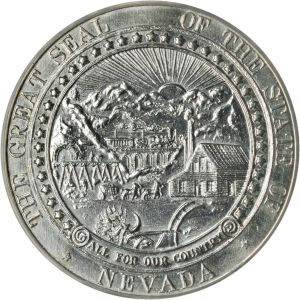
The silver market is very similar to gold because both are mined from rocks underground and then refined into bars or coins before they’re sold on the open market.
Silver can be found as an ore in many parts of the world, including Mexico, Australia, Canada, China, India, Russia and South Africa. Because silver is so widely available in Earth’s crust (although not as much as gold), its price fluctuates less than that of gold or copper each year.
Silver is one of the most widely traded precious metals on Earth, but its value isn’t based on how much you can mine from the ground or refined from ore into bars or coins. It’s valuable because of what people do with it after they mine or refine it into bars or coins: use it for making money, jewellery, silverware, cutlery, electrical devices (heat sinks), etc…
Platinum
Platinum was first discovered around 1800 B.C., but only became valuable about 100 years later after its discovery was recorded by Greek historian Herodotus. It’s very rare and, so unsurprisingly, it’s very expensive.
Used in jewellery and in industrial applications like heat sinks in electronics, it can only be mined from two places: the Democratic Republic of Congo and South Africa. Because it’s hard to come by and because there are few substitutes for it, platinum tends to be traded at a premium price.
The United Nations defines an ounce of platinum as 0.9995 pure platinum, which means that its actual purity level must be greater than 99.95% to be considered platinum.
FAQs 📀
What Are Some of the Risks Associated with Investing in Gold?
The biggest risk associated with investing in gold is that as an asset class, its value isn’t stable – unlike cash savings accounts or government bonds, which have a low level of risk associated with them. Gold prices fluctuate based on supply and demand factors and can be affected by events outside of Australia, such as natural disasters or political unrest in other countries that affect their ability to mine the precious metal.
How Can Gold Investors Lower Risk?
The best way for investors to protect themselves is by diversifying their portfolios and spreading their investments across several different asset classes such as cash savings accounts, government bonds, shares and property – all of which should be part of any well-diversified portfolio
Conclusion 🌞
Gold theoretically remains one of the safest investments available. It’s an asset that’s been used as currency for thousands of years and has a nearly unbreakable link to stability.
When you invest in gold, you’re basically buying insurance against the risk of financial instability. Investing in gold allows you to hedge against any potential economic downturns and helps ensure your financial security in the event of a devastating disaster.
You Might Also Like:






